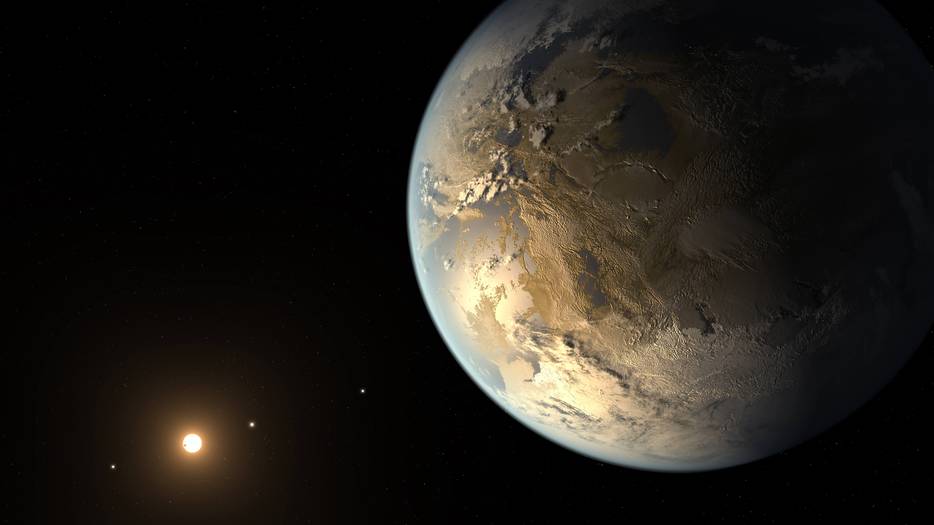Image © NASA
Milky Way alone could hold about 300 million potentially habitable worlds.
The extensive universe is around 13.8 billion years (however a new study shows it is 13.77 years old, give or take 40 million years) and Earth is the only planet that is hosting biological life. Unearthing the biological life except at Earth is humanity’s all-time greatest challenge and achievement if we could get one. We can’t even imagine what it would look like and feels like; do it looks like the alien characters of a famous TV show ‘Star Trek’ of the movie ‘Men in Black’? It would be the world’s greatest day if we can directly and in real realize extraterrestrial biological life.
It was Uranus (within our solar system) that was first (in 1781) detected using the telescope and PSR B1257+12 the first (in 1992) exoplanets (planet beyond our solar system). Since then humanity have wondered how many exoplanets could harbour life and we are one step closer to answer this question.
According to new research using data from NASA’s retired planet-hunting mission, the Kepler space telescope, about half the stars similar in temperature to our Sun could have a rocky planet capable of supporting liquid water on its surface.
They together claimed that our galaxy also holds an estimated 300 million of these potentially habitable worlds and some of these exoplanets could even be our interstellar neighbours, with four potentially being within 30 light-years of our Sun and the closest likely to be about 20 light-years from us.
Lead author Steve Bryson, a researcher at NASA's Ames Research Center in California's Silicon Valley said, "Kepler already told us there were billions of planets, but now we know a good chunk of those planets might be rocky and habitable. Though this result is far from a final value, and water on a planet's surface is only one of many factors to support life, it's extremely exciting that we calculated these worlds are this common with such high confidence and precision."
Related: How Do We Find Habitable Planets?
This research, no wonder, help us understand the potential for these planets to have the elements to support life. This is an essential part of astrobiology, the study of life’s origins and future in our universe.
For calculating this occurrence rate, the team narrowed their observation at exoplanets between a radius of 0.5 and 1.5 times that of Earth's. This radius size exoplanets are considered as the most like rocky and consequently may contain the evidence of biological life. They also focused on stars similar to our Sun in age and temperature, with effective temperatures between 4800 K and 6300 K.
The team also redefined the way to identify the habitability as the previous estimates of the frequency, also known as the occurrence rate, of such planets, ignored the relationship between the star's temperature and the kinds of light given off by the star and absorbed by the planet.
This new finding is a significant step forward in Kepler's original mission to understand how many potentially habitable worlds exist in our galaxy.
The new analysis fully accounts for the relationship between the star's temperature and the kinds of light given off by the star and absorbed by the planet and serve astronomers a more complete understanding of whether or not a given planet might be capable of supporting liquid water, and potentially life. This new approach is made possible by combining Kepler's final dataset of planetary signals with data about each star's energy output from an extensive trove of data from the European Space Agency's Gaia mission.
Ravi Kopparapu, an author on the paper and a scientist at NASA's Goddard Space Flight Center in Greenbelt, Maryland said, "We always knew defining habitability simply in terms of a planet's physical distance from a star, so that it's not too hot or cold, left us making a lot of assumption. Gaia's data on stars allowed us to look at these planets and their stars in an entirely new way."
The amount of energy that falls on a planet from its parent star based on a star's flux or the total amount of energy that is emitted in a certain area over a certain time was provided by Gaia where this allowed the researchers to approach their analysis in a way that acknowledged the diversity of the stars and solar systems in our galaxy.
A planet's atmosphere figures into how much light is needed to allow liquid water on a planet's surface as well, however, the exact effect is still not completely understood. Though much extensive research is vital in future, using a conservative estimate of the atmosphere's effect, the researchers estimated an occurrence rate of about 50% - that is, about half of Sun-like stars have rocky planets capable of hosting liquid water on their surfaces. An alternative optimistic definition of the habitable zone estimates about 75%.
Bryson said, "To me, this result is an example of how much we've been able to discover just with that small glimpse beyond our solar system. What we see is that our galaxy is a fascinating one, with fascinating worlds, and some that may not be too different from our own."
Future research will continue to refine the rate, informing the likelihood of finding these kinds of planets and feeding into plans for the next stages of exoplanet research, including future telescopes.
A research paper is made available here and to be printed in The Astronomical Journal.
